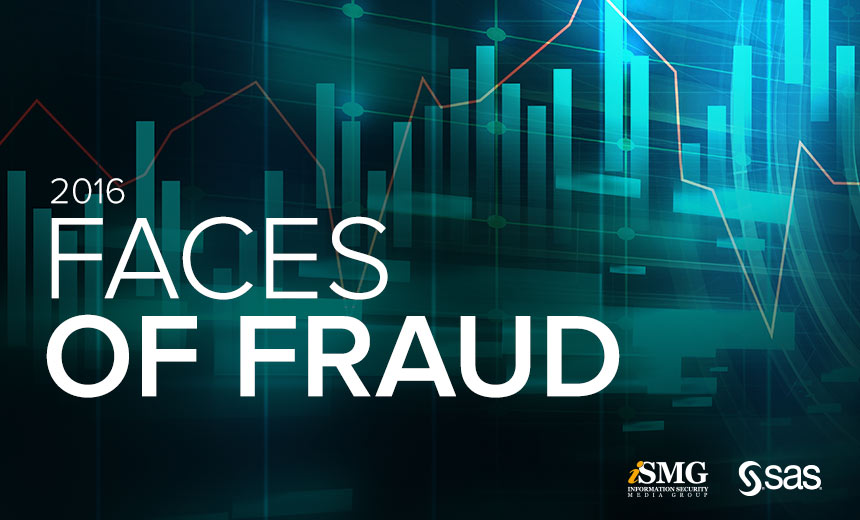Cybersecurity
,
Fraud
,
Technology
2016 Faces of Fraud: The Analytics Approach to Fraud Prevention
Presented by
SAS
60 Minutes
 How Has Enterprise Mobility Forever Changed the Way Your Enterprise Conducts - and Secures - Business?
Only 34 percent of surveyed security leaders say they have high confidence in their organization's ability to detect and prevent fraud before it results in serious business impact. Among the reasons why they lack confidence:
Today's fraud schemes are too sophisticated and evolve too quickly (56 percent of respondents)
Customers and/or partners lack sufficient awareness to protect themselves from socially-engineered schemes (56 percent)
Employees lack that same awareness (52 percent)
These are among the results of the 2016 Faces of Fraud Survey, sponsored by SAS and focused on The Analytics Approach to Fraud Prevention. Attend this session to learn:
The top forms of fraud afflicting financial and government organizations in 2016
Biggest gaps in organizations' efforts to detect and prevent fraud
How organizations are leveraging new data analytics tools to improve their abilities to spot and then stop today's top scams
ISMG has conducted the Faces of Fraud Survey for seven years now, but this is the first time under SAS sponsorship and with a focus on - as the title says - the Analytics Approach to Fraud Prevention.
Some statistics that jump out from this study:
67 percent of respondents say it takes one day or more to uncover a fraud incident once it occurs
56 percent say customers and/or partners lack sufficient awareness to protect themselves from socially-engineered schemes
54 percent are not currently deploying advanced data analytics tools
Encouraging news from the survey results? Forty-six percent of respondents say they actively deploy advanced data analytics to monitor transaction/program activity and predict the likelihood of fraud.
But there is also concerning news: Forty-two percent say they lack the staff expertise to successfully deploy advanced data analytics tools; and 45 percent say their current systems allow for only limited analytics.
Register for this session for a detailed look at the forms of fraud afflicting financial and government organizations; their current security controls - and gaps; and where they plan their biggest anti-fraud investments for 2017.
You might also be interested in …
How Has Enterprise Mobility Forever Changed the Way Your Enterprise Conducts - and Secures - Business?
Only 34 percent of surveyed security leaders say they have high confidence in their organization's ability to detect and prevent fraud before it results in serious business impact. Among the reasons why they lack confidence:
Today's fraud schemes are too sophisticated and evolve too quickly (56 percent of respondents)
Customers and/or partners lack sufficient awareness to protect themselves from socially-engineered schemes (56 percent)
Employees lack that same awareness (52 percent)
These are among the results of the 2016 Faces of Fraud Survey, sponsored by SAS and focused on The Analytics Approach to Fraud Prevention. Attend this session to learn:
The top forms of fraud afflicting financial and government organizations in 2016
Biggest gaps in organizations' efforts to detect and prevent fraud
How organizations are leveraging new data analytics tools to improve their abilities to spot and then stop today's top scams
ISMG has conducted the Faces of Fraud Survey for seven years now, but this is the first time under SAS sponsorship and with a focus on - as the title says - the Analytics Approach to Fraud Prevention.
Some statistics that jump out from this study:
67 percent of respondents say it takes one day or more to uncover a fraud incident once it occurs
56 percent say customers and/or partners lack sufficient awareness to protect themselves from socially-engineered schemes
54 percent are not currently deploying advanced data analytics tools
Encouraging news from the survey results? Forty-six percent of respondents say they actively deploy advanced data analytics to monitor transaction/program activity and predict the likelihood of fraud.
But there is also concerning news: Forty-two percent say they lack the staff expertise to successfully deploy advanced data analytics tools; and 45 percent say their current systems allow for only limited analytics.
Register for this session for a detailed look at the forms of fraud afflicting financial and government organizations; their current security controls - and gaps; and where they plan their biggest anti-fraud investments for 2017.
You might also be interested in …
 Clinic Reports Security Incident Involving HIE Access
Clinic Reports Security Incident Involving HIE Access